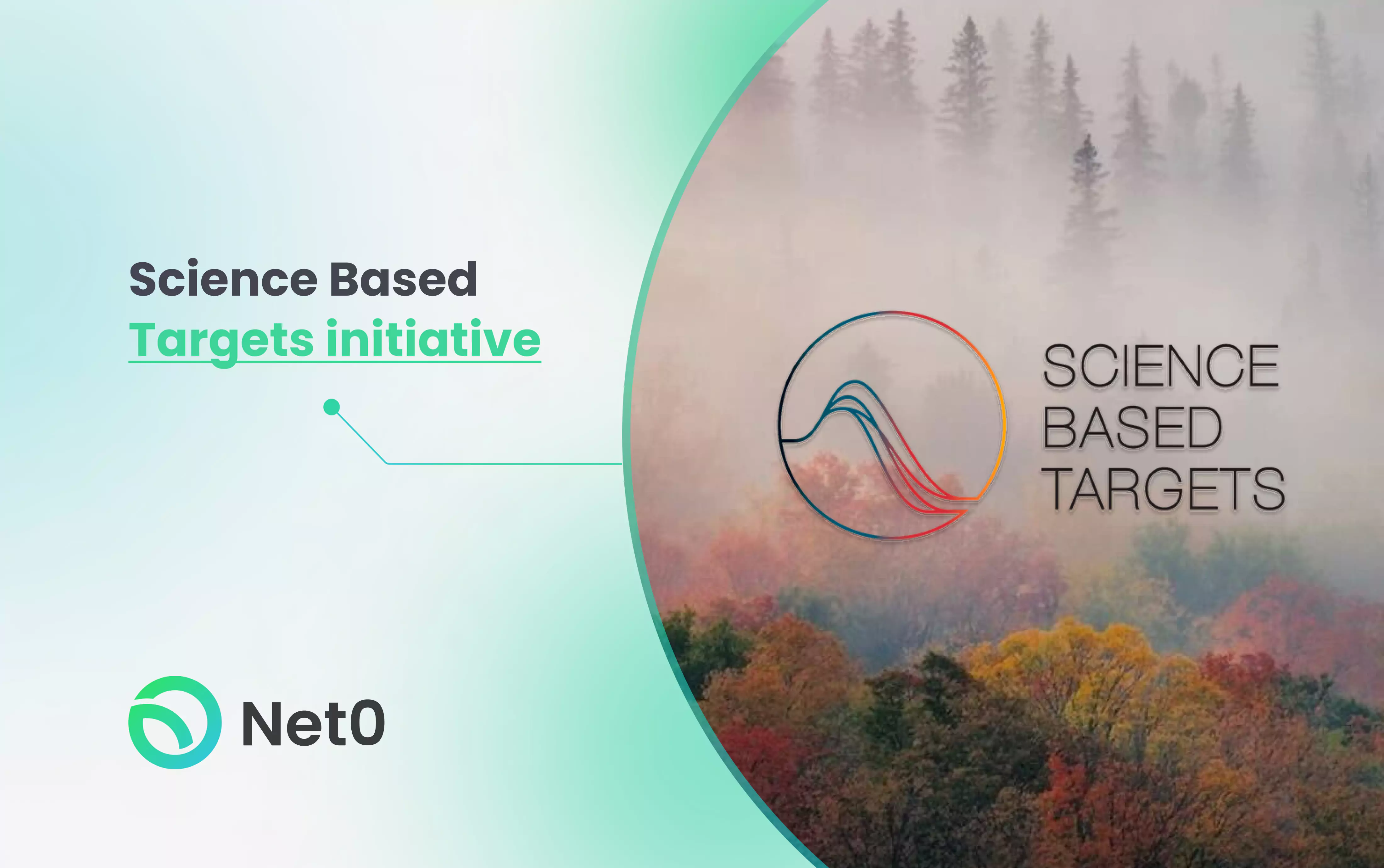
The Science Based Targets initiative (SBTi) serves as a corporate climate action organization, empowering companies and financial institutions globally to contribute to the fight against the climate crisis. It was founded by the CDP, UN Global Compact, WRI, and WWF.
Science-based targets guide companies in creating a clearly-defined path to reduce emissions in line with the Paris Agreement goals which limit global warming to 1.5°C above pre-industrial levels.
In this article, we’ll share what a science-based target is, what the steps are to disclosing progress on science-based targets, and why achieving those targets are important for your company.
The SBTi exclusively acknowledges authentic decreases in your carbon footprint, excluding carbon offsets or prevented emissions. Only actual reductions without any compensations or adjustments are recognized in a science-based target although companies may have to offset residuals until they can cut back on carbon completely. Preventative measures as part of your reduction strategy are key. Here, we are currently exploring the definition of an actual “target”.
Science-based targets comprehensively assess a company's carbon emissions, utilizing the GHG Protocol's framework that distinguishes various scopes of emissions. SBTs should encompass 95% of Scope 1 and 2 emissions, and all Scope 3 emissions if they constitute 40% or more of the total. (Even for companies below the 40% threshold, measuring, reporting, and managing Scope 3 emissions is essential, though specific Scope 3 SBTs are not mandatory at this time.) Another note is generally, scope 3 emissions make up approximately 70% of a supply chains’ emissions.
The SBTi requires businesses to take 5 steps when setting their science-based targets:
While science-based targets focus on reducing carbon without offsetting, net zero targets go beyond that and ask for removing the carbon emissions which are already in the atmosphere. SBTi’s guidance for net zero states 4 requirements:
Setting science-based targets is a strategic approach that aligns your company's sustainability efforts with the latest scientific knowledge and global climate goals. Here are several reasons why your company should consider setting science-based targets:
Related content
For more information about how to report on your emissions, check out our additional resources:
•Article: How Are Carbon Emissions Measured?
•Article: Decarbonization: How to Set Goals and Sustainability Targets
•Article: How to Calculate Your Carbon Footprint
•Article: Carbon Accounting Methodologies for Measuring Emissions
Net0 leads the way in empowering businesses to set and achieve ambitious, scientifically aligned carbon reduction goals. Our platform is specifically designed to support adherence to the SBTi, equipping organizations with the necessary tools and expertise to confidently meet their science-based sustainability objectives.
Transitioning to a low-carbon economy requires a clear, strategic approach. Net0 facilitates this transition with predictive analytics and scenario planning tools that offer insights into the impact of various carbon reduction strategies. This enables businesses to transform their science-based targets from abstract ambitions into concrete, actionable plans.

Net0’s platform meticulously aligns with the stringent standards of the Science Based Targets initiative, ensuring your carbon reduction strategies are not just ambitious but scientifically grounded and achievable. This alignment provides businesses with the confidence that their efforts contribute meaningfully to global sustainability goals.
Tracking progress toward SBTi targets becomes straightforward with Net0. Our platform enhances the process of data collection, monitoring, and reporting, ensuring accuracy and transparency in communicating achievements. This streamlined approach supports businesses in demonstrating their commitment and progress toward scientifically validated sustainability efforts.
.jpg)
Adopting SBTi-aligned targets opens doors to new opportunities for growth and innovation. Net0 assists in identifying sustainable business practices that enhance operational efficiency and profitability while reducing environmental impact. This strategic focus ensures that sustainability is not just an environmental consideration but a cornerstone of business success.
.png)
Setting targets with the SBTi helps your business:
Net0 is government-compliant meaning it’s in alignment with all international regulations from voluntary to mandatory reporting. Book a demo with Net0 and experience how entering your emissions data is a necessary and simple step to your profitable decarbonization strategy; the only way to measure, track, reduce, and report on GHG emissions.
